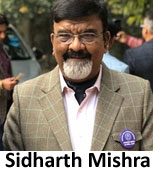With elections in few states now round the corner, Delhi Chief Minister Arvind Kejriwal is once again on his ‘power charity’ binge promising free 300 units of power in Punjab, Uttarakhand, Uttar Pradesh and Goa. He is hawking the Delhi Model of subsidizing power charges.
It’s true that Kejirwal has subsidized power charges since 2014 but this was made possible through the power reforms which was implemented in Delhi in 2002. If a present-day researcher on power reforms in the national Capital were to do a project, the keywords would be SBI Caps, Discom, Transco, Genco and power theft.
According to a recent report, power theft in the national Capital has come down from 2002 to 2020 from 55% to 7.5%. In technical terms, this is called the aggregate technical and commercial (AT&C) losses, primarily caused by theft. The gains on this ground are also to be understood in terms growth in power supply, from a power demand of 2,879 megawatt in 2002 to 7,409 mega in 2019, which amounts in an increase of 157.3%.
On coming to power in 1998, one of the first major policy decision taken by the Sheila Dikshit government was to privatize power supply, for which SBI Caps was commissioned to prepare a roadmap. The consulting company suggested unbundling the government run Delhi Vidyut Board into three companies with three different mandates – power generation (Genco), power transmission (Transco) and power distributions (Discom).



